Experts might find the terrain too tame. But most skiers will love what Vail has to offer, which is miles and miles of perfectly-manicured trails, superb entry-level off-piste, and lots of family-friendly features.
Altitude: 8,120ft (2475m)
Lifts: 31
Top Lift: 11,570ft (3527m)
Ski area: 5,289 acres of terrain
Adult lift pass: $444-654 for six days
Official Site |
Ski Map |
Webcam
Essential Advice for the Perfect Trip
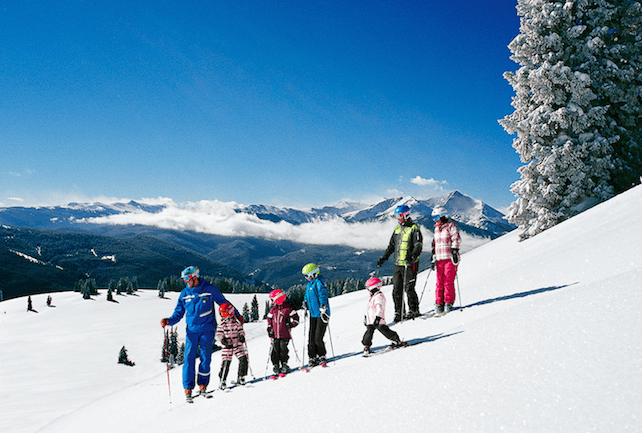
In recent years, Vail has taken a big step upmarket. While many resorts struggled through the recession, Vail kept on building and innovating, and in doing so has joined a tiny club of resorts frequented by the globalised super-rich. In Europe, this is the territory occupied by Courchevel and St Moritz. But increasingly in America it’s Vail, not Aspen, that’s drawing in the gazillionaires – especially from the burgeoning markets in Mexico and Brazil.
It’s the skiing, stupid
But don’t let all the glittering hotels and residences distract you from the central fact about this Colorado resort. What brings people back, year after year, is the fact that the mountain makes them feel good about their skiing. No amount of bling can compete with the buzz you get when you’ve been making fluent turns, and pushing your limits: and there are few ski areas on the planet better suited for intermediates and early advanced skiers.
If your nerves are shattered after years of jostling on crowded Alpine pistes, or if you yearn to ski off-piste, but have never worked out how, put it high on your hit list.
Why is it such a forgiving place to ski? Well, the terrain has a lot to do with it (read more about that in our guide to the mountain). The quality of the snow is crucial too. But just as important are the people – and the hard work they put in behind the scenes. You’ll notice this first in ski school. But the fruits of their labour can also be seen in the fast, efficient lift system, the well-groomed pistes, and the high levels of customer service.
But be careful where you stay
There are a few caveats about Vail ski holidays. One of the most important is making sure you stay near one of the lifts. There are four main lifts up the mountain – and to get the full benefit of this resort, you should stay near one of them. That usually involves paying a hefty premium – but not always. Read on for more advice about hotels, apartments and chalets.
And be careful when you visit
The other caveat is about the time of year you visit. If you don’t like the cold, you’ll find January and early February can be brutal. But if Vail’s superb entry-level off-piste skiing is the attraction, avoid the spring (from early March onwards) because the famous back bowls face south, and get hammered by the sun. You should also make sure your stay includes some midweek days as well as the weekend: Saturdays and Sundays are much the busiest times here.
Guide to the Mountain

What do most skiers want? Not death-defying couloirs and cliff drops. Not bump runs or World Cup race courses or monstrous terrain-park jumps. They may say that’s what they’re after – parroting all the phrases they’ve read in ski mags or heard on extreme-skiing video clips.
But what most of them really need – and rarely find – are wide, confidence-boosting trails covered in soft, groomed and grippy snow. After all, most skiers don’t get onto the mountain much – and they want to feel good about their skiing when they do. Not feckless and stupid.
Vail understands this; and it has the terrain and the snowfall to help. Its ski area spreads over two rolling ridge lines which receive 366 inches (9.29m) of snow each season. There are resorts in Utah and the Pacific Northwest which get a lot more snow than that – but it’s a healthy average nonetheless, and higher than any you’ll find in an A-list Alpine ski resort.
What’s more, Vail’s slopes are set at high altitude, nearly 1,000 miles from the Pacific – and many of its best trails are north-facing too. That means the white stuff is usually cold, dry and very forgiving. Add the mostly unthreatening and even pitch of the trails, and you’ve got the makings of one of the world’s great intermediate playgrounds.
Intermediates will have a ball
Needless to say, skiers of middling ability love Vail. By Alpine standards it’s not enormous (the Val d’Isere–Tignes ski area in France, for example, is 4.5 times bigger): but the quality of the trails and snow, the speed of the lifts, and the upbeat, can-do atmosphere make for a confidence-boosting experience.
Book a few lessons with the excellent ski school and you’ll find your technique improving dramatically: so much so that by the end of the week you may want to experiment off-piste – away from the groomed trails. Which is good news – because Vail’s other strong suit is its entry-level off-piste terrain.
The Back Bowls make powder skiing easy
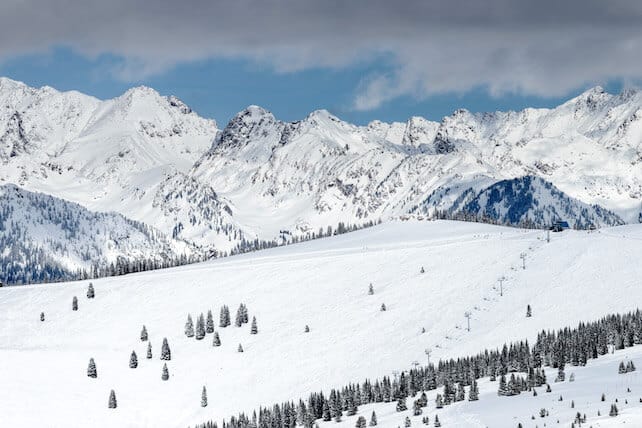
Even better than Vail’s groomed trails are its Back Bowls. These fall away south from the resort’s principal ridgeline, and are heaven-sent for advanced skiers looking to boost their powder-skiing skills.
Why? Three reasons spring to mind:
1. They’re not very steep, and for the most part are unbroken by rocks, chutes or trees.
2. There are trails at the top, and trails at the bottom, and all the terrain is lift-serviced. You don’t need to hike to reach this stuff.
3. It’s all secured against avalanches. If it’s within the resort boundary you can ski it – without avalanche equipment or guides.
In other words, after a dump you can ski lap after lap here, working on your technique and finding your rhythm – without having to worry about where you’re going or what obstacles lie ahead. Bliss.
There are a couple of caveats. First is the fact that most of the bowls face south-east or south-west and get hammered by the sun in springtime. Come in January or February if you want the best chance of skiing them at their peak. Second, they are popular – especially at the weekend. If there’s fresh powder, you must get up early, get on the first lift, and head straight for them if you want first tracks.
The Back Bowls aren’t the only draw for advanced skiers. There are some great bump runs on the slopes above town, and lots of very sweet lift-serviced terrain in Blue Sky basin, beyond – most of it north-facing and sheltered by trees, so the snow stays in much better condition than on the Back Bowls.
On busy days, when the Back Bowls and Blue Sky Basin are swarming with powder-hungry locals – you should ski the frontside, through the gladed runs off chairs 11 and 2.
But Vail isn’t steep enough for real experts

There are challenges – notably a wall of short, sharp chutes under the Skyline Express in Blue Sky Basin, as well as the Minturn Mile, a back-country route that ends at the small town of Minturn (and margaritas at the Minturn Saloon). You can mix it up amongst the trees to make life more interesting too. But overall, this isn’t a hotspot for real experts. Head somewhere like Jackson Hole or Chamonix instead.
…and it’s too steep for complete beginners
Complete beginners will find the front side of the mountain a bit steep. There are nursery slopes: notably above the Golden Peak area of Vail Village. And the ski school is excellent. But there better places to learn – check out our guide to the best resorts for beginners.
Freestylers should go to Breckenridge
Vail has three terrain parks – and in marked contrast to many resorts, they’re served by high-speed chair-lifts: not some cranky old drag or the oldest, slowest chair on the mountain. They’ll serve you well from your first jump to 720s in the 22ft half-pipe (and if you’re wondering how to get started in the terrain park, check out our two key video features How to get from piste to terrain park and How to take off, and land, on your first ski jump). But if you’re looking for a really inspiring, world-class freestyle scene, then spend a couple of weekends at Vail’s sister resort of Breckenridge.
Everyone should try the Mountain Remix
Finally – always remember to stop and get your picture taken at the top of the key lifts, by a photographer wearing green. The pictures are free, and you’ll be able to access them at the end of the day using your lift pass, at Epicmix. Then, build them into your Mountain Remix, an app that tracks your vertical, helps you plan your day on the slopes, check lift wait times, and – more importantly, build neat online souvenirs of your skiing day.
Where to Learn
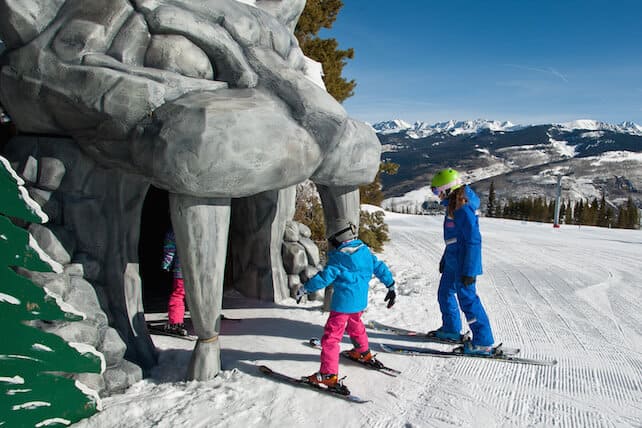
There’s only one ski school in Vail – owned by the company which runs the ski area, the mountain restaurants, and several of the hotels too. In the Alps, that would be a recipe for complacency. But not in Vail. The resort is constantly adapting its offering to take account of public demand, and employs some of the best instructors we’ve ever skied with. If you ever get the chance to spend a day with J.Scott Thomas or John Weiss, for example, grasp it with both hands.
The programme of women-only lessons is particularly strong
Among Vail’s most eye-catching programmes are its Teen Ski Girls Rock lessons. They’re aimed at 13-15 year old girls who are tired of skiing with their brothers, and want a less macho experience. The maximum class size is four, and the young, enthusiastic women who teach the course are perfect for the job. For women, a similar experience is on offer in its Ultimate 4 clinics.
Where to Stay

Vail is a long, linear resort spread along the Gore Creek valley, which is never more than five blocks wide. It has two separate satellite villages – West Vail and East Vail – which are a fairly long walk away from each other. Vail shares this narrow site with the I-70 freeway. The road is well away from the ski lifts and trails, but several hotels and condominiums are close to it.
Near the lifts is best
In other words, if you get your choice of accommodation wrong you could find yourself next to a busy road, and a long bus ride from the lifts. The only reason you’d want to do this is if you get a significant discount on the price of your holiday.
Far better, if the budget allows, to stay in a hotel or condominium (aka a self-catering apartment) near one of the two main hubs of lifts and pistes – Vail Village or Lionshead.
Stay in Vail Village for nightlife and shopping
Vail Village is the original heart of the resort, and feels a bit old-fashioned now, given what’s going on elsewhere in the resort: the really state-of-the-art accommodation is elsewhere. Still, it’s a great location – with the best bars and restaurants on your doorstep, as well as the key Vista Bahn lift. Staying here, you’d never know I-70 is nearby. Accommodation is not cheap though.
Our favourite hotel here is The Lodge at Vail: the (refurbished) rooms are on the small side, but the bathrooms are huge, and it does a cracking breakfast. It’s convenient for just about everything: and you’ll probably spend all your non-skiing time within 200m of the back door. Nearby, Tivoli Lodge is family run, and more affordable. It also has fewer facilities and is just a little further from the shops and bars. By way of compensation, it’s close to the Riva Bahn lift, so you’ve got a choice of two chairs up the mountain in the morning.
Stay at the Arrabelle for quick access to the slopes
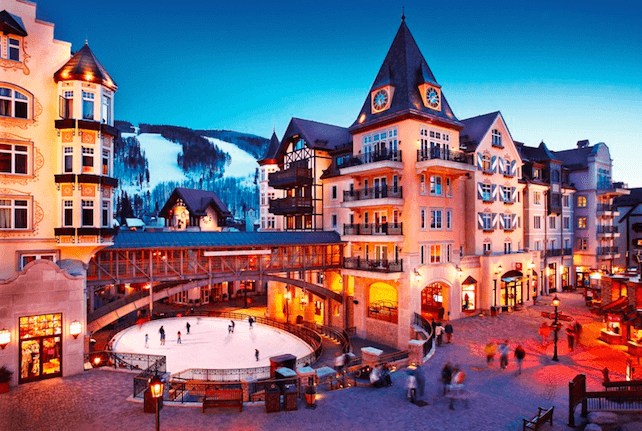
It’s about 15 minutes’ walk from the Gondola One lift to the gondola and chair at Lionshead – or a five minute ride on the free shuttle bus. Lionshead used to be Vail’s afterthought, but a multi-million dollar redevelopment means it’s now a hub in its own right.
The pick of the properties here is The Arrabelle: a two-minute walk to the slopes and shops, and has cavernous bedrooms. But it’s not cheap. The Marriott is about five minutes’ walk from the slopes and is also good, as well as being a little cheaper. The Marriott also has an indoor pool.
The poshest pads aren’t always the most convenient
Vail’s choice of luxury ski accommodation has widened considerably in recent years – thanks to the addition of three posh condominium complexes. None is particularly handy for the lifts, so make sure free shuttle-bus transfers are part of the package. Two are close to highway I-70 too, so make sure your apartment is facing the mountains, not the road – unless, of course, you don’t mind the sight of passing trucks.
The most striking of the newer buildings is Solaris. The apartments are all enormous, and facilities impressive. As well as a high-end spa and pool complex, the building also houses CineBistro – a cinema with restaurant – and Bol – a bowling alley with restaurant. Prices for a week’s rental are eye-watering – and there’s a free shuttle bus to the lifts at Vail Village.

Meanwhile, over in Lionshead, the Ritz-Carlton Residences also offer high-end luxury apartments, and are a 5-10 minute walk from the ski lifts (there’s also a free shuttle bus). There’s also a high-end Four Seasons in the resort (it’s a 10-15 minute walk from the lifts – so you’ll be using the free shuttle a lot if you stay here).
Cheap digs close to the lifts are hard to find
A lot of cheap Vail hotels and condominiums are a long way from the lifts. But not all. Westwind at Vail, for example is an ageing development of privately-owned apartments which is a five-minute walk from the lifts at Lionshead. You need to be careful which one you book, though: avoid at all costs apartments on the north side of the development, next to I-70.
Aim for one which is rated gold on the website, which is set on the south side of the development (nearest the lifts), and which has been refurbished, and you’ll probably be delighted. End up in something old and cranky next to the highway and you’ll be very grumpy indeed.
Near Lionshead is Vail Cascade Condominiums. It’s a little dated in style, and is a short shuttle-bus ride from the resort. But it’s also connected to the main Lionshead slopes by both a chair-lift and a flattish cat-track trail, and is well-kept. The resort is also home to a big spa and fitness area. Other cheap-ish places to consider in town are the Evergreen Lodge (about 15 minutes’ walk from the lifts – best to get one of the local buses), and Gasthof Gramshammer (five minutes from the lifts), whose Austrian owners have given it an Alpine flavour.
If you don’t mind riding buses each day into the resort, there are cheaper options. In East Vail – a separate village – the Racquet Club offers good value. Always look out for low-season lift-pass-and-lodging offers from Vail Resorts, too.
Where to Eat
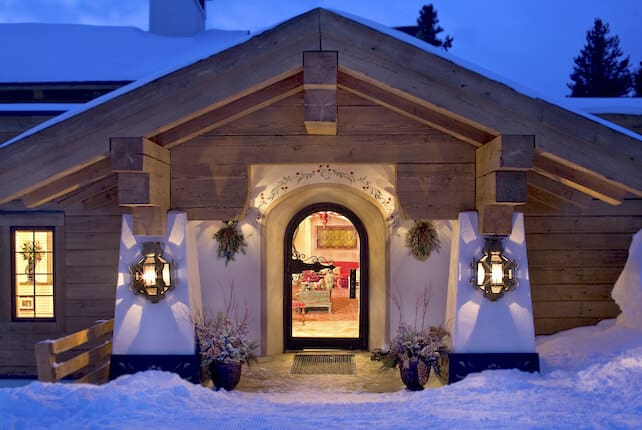
The mountain restaurant scene in Vail has improved considerably in recent years. But still, it’s no match for the best of the Alps. If a wide choice of top-notch lunch spots is what you’re after, turn your gaze to Zermatt, The 3 Valleys, the Italian Dolomites or the Aosta Valley.
Why? Because in the Alps most mountain restaurants are privately-owned and personally-run: whereas in Vail, as in most American resorts, the lift company owns them all. Some are very good: but there’s no way a corporation can reproduce the drive and energy of, say, 20 different owner-managers scattered across the ski area. ‘Twas ever thus with restaurants. After all – where would you rather eat in a city? At a chain eatery, or some up-and-coming new spot that’s one of a kind?
The 10th is the best place to eat on the mountain
That said, the best food in the ski area is now very good. A table-service restaurant called The 10th is a firm favourite with the locals, so book ahead to be sure of a table. You’ll find it on the front side of the mountain at the top of Gondola One.
There are some lovely things to eat in there, including exceptional salads – just the thing if you don’t want to sink into a carbohydrate coma and miss out on an epic afternoon’s skiing. And the prices are pretty reasonable – certainly, compared with those in the French Alps. The other table-service restaurant on the mountain is Bistro Fourteen, at the top of the Eagle Bahn Gondola from Lionshead.
Elsewhere on the mountain you’ll eat soup, wraps, burgers and pizza. Europeans habitually complain about this stuff. But most of it is freshly-cooked, and it’s a godsend for families with picky children, and indeed for anyone who just wants to refuel quickly. However, you should beware of Belle’s Camp at the far end of the lift system, above Blue Sky Basin. If you trek over there expecting to reward yourself with lashings of warm food, you’ll be disappointed. Barbecues are provided for you to grill your own meat, and are much used by the locals. But the food on sale consists mainly of crisps and sandwiches.

Down in the valley, Vail is bursting with good restaurants
In contrast with the mountain, the town is bursting with good restaurants. Most are concentrated in Vail Village rather than Lionshead. Many are expensive.
For contemporary American cuisine – think lamb, beef, chicken, salmon and a sprinkling of seafood – Larkspur is an excellent choice. It’s set in the Golden Peak Lodge, next to the Riva Bahn Express lift, and is the favourite Vail restaurant of ski-racing superstar Lindsey Vonn. Vendetta’s is a great place for seafood.
Another firm favourite is Sweet Basil – often fully booked in the evening, so be sure to reserve your table before you arrive in the resort. Again, the food is contemporary American, and like many Vail resorts, it charges $30-50 for main courses. Ouch. Of similar quality is La Tour, opposite the Solaris development. Its food has a slight French accent, but much of it is contemporary American. Try the scallops with black truffles: YUM.
Vail is also a good town in which to order steak. Elway’s, in the Lodge at Vail is one spot to aim for. Visiting Argentines claim the meat there is better than it is back home. Russell’s, nearby on Bridge Street, also does excellent steaks. Flame in the Four Seasons is also a hot spot for carnivores.

For sushi, Osaki’s is so small that it doesn’t even rate a mention in the official Vail Valley Dining Guide. This is where the locals go for Japanese cuisine. Matsuhisa in the glittering Solaris development is another good place – and you can expect to spend serious money on your meal. You can also eat on the mountain at night – at Game Creek. You book at table, ride the gondola up from Lionshead, and catch a snowmobile for the short transfer over to the restaurant, which is a private club during the day.
All of the above are pretty serious-minded places to eat. For something more laid back, head to the Solaris development, between I-70 and Vail Village for Bol – a bowling alley where you can order oysters and champagne – and CineBistro, where you eat dinner and watch a film.
Over in Lionshead, there are three good spots for cheap eats – Garfinkels serves burgers, and Bart & Yeti’s is the place for Nachos. The Blue Moose is a good pizzeria.
Where to Party
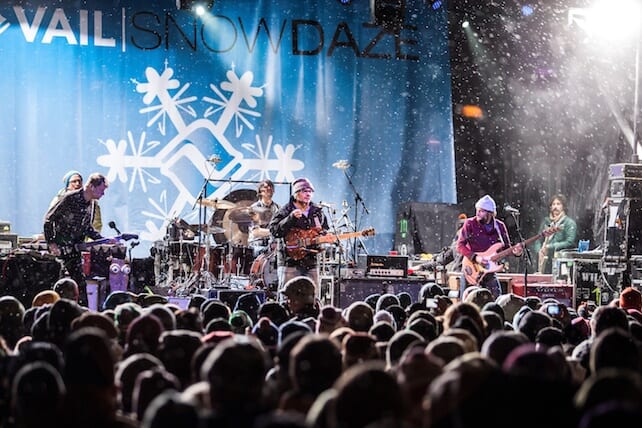
If you want to rock to DJs on the mountainside at 3pm – and then wobble downhill to dance on tables in your ski boots, Vail isn’t the place for you. Nor is any other North American resort for that matter. Head to Val d’Isere, Val Thorens, St Anton, Ischgl, Les Deux Alpes, Mayrhofen or Verbier instead. Check out our guide to the best apres-ski bars in the world, too.
They don’t do hard-core, Alpine-style apres-ski here
Vail’s style of apres-ski is more accoustic guitar and Great American Songbook than Katy Perry and DJ Otzi. Still, the atmosphere builds nicely, especially on Friday, Saturday and Sunday when Denver washes up I-70 for the weekend. And you’re more likely to know the words to all the songs than you are in Austria.
When the lifts close both Lionshead and Vail Village have a good selection of bars. In Lionshead, aim for Bart & Yeti’s. Garfinkels has a sun-deck facing the slopes, which is rammed when the weather’s good. The Red Lion pub in Vail Village is fun, especially at the weekends. It’s a mellower scene – driven by live accoustic sets rather than canned techno beats – but plenty of people like it that way.
Bands play at the Sandbar (+1 970 476 4314). If it’s DJ sets you’re after, head to Samana Lounge, one of the best ski lounges in the country. Vail Snow Daze is the largest early-season mountain party in North America, with free live concerts.
Something for the kids after dark
The best thing about apres-ski in Vail is its variety. Anyone with children will want to head up to Adventure Ridge when the lifts shut, for tubing, ski bikes, and a kids’ snowmobile track.












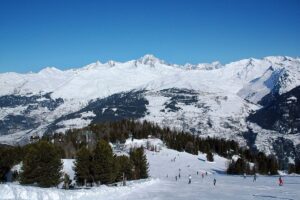

I miss skiing and in Vail is one of the best places to ski.